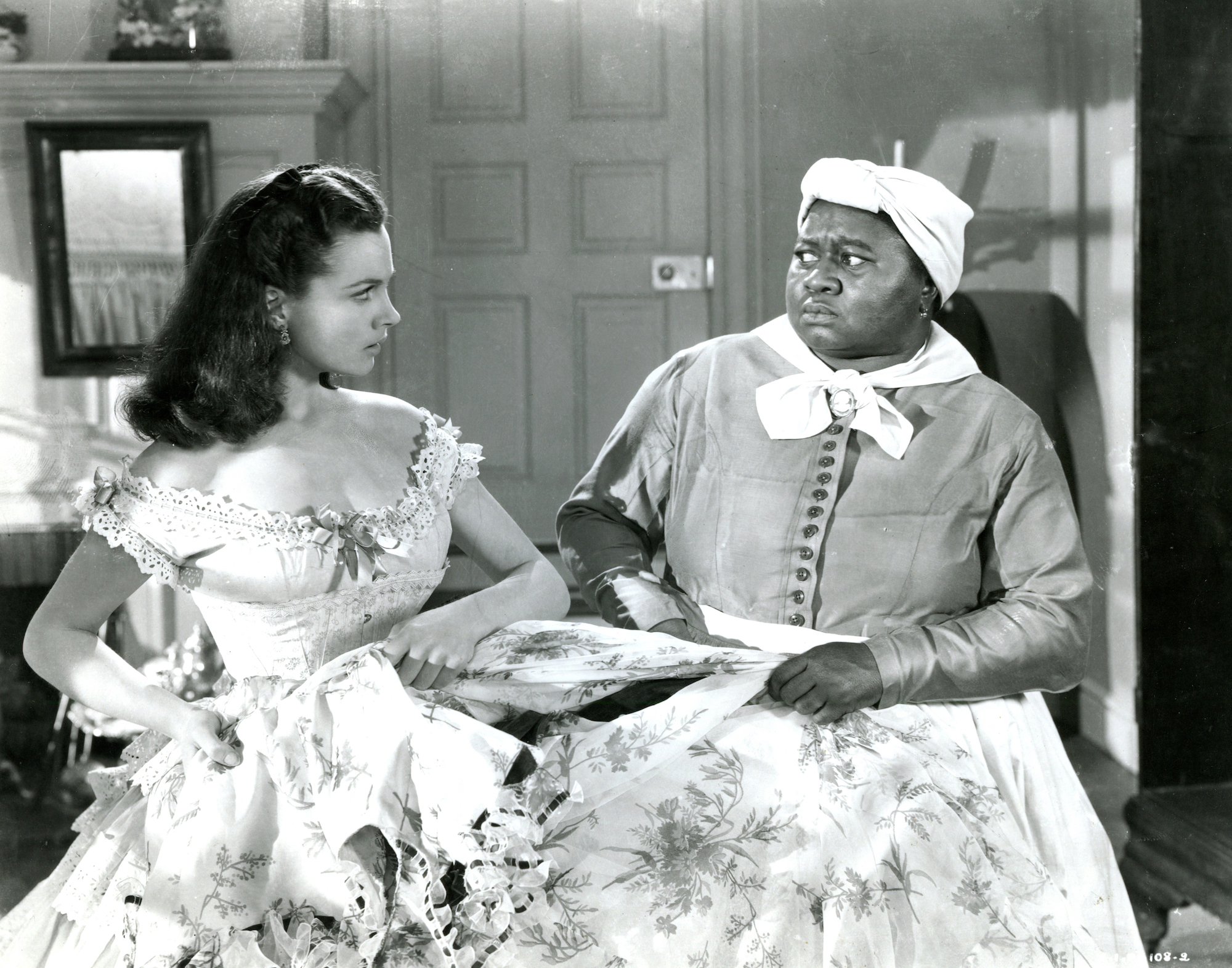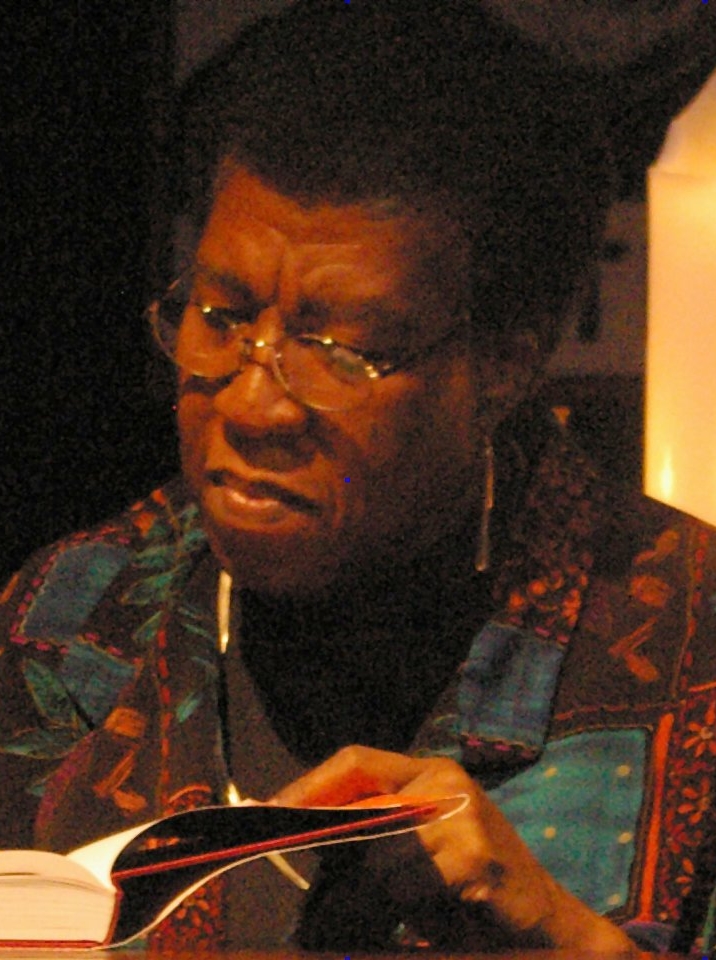When the Problematic Fuels Your Creative Drive
Writer S.D. Chrismon considers how to relate to problematic media representations of Black characters—from Black Mirror to Gone with the Wind—and asks how to reenvision pop culture lineages in order to craft new Afrofuturist narratives.

As a Black/Biracial woman in America, my writing is uniquely informed by my positionality in the world. My writing is informed by my privileges and my politic. Part of my politic is the problematic; by problematic, I mean those images or sounds that make you feel kind of itchy, or that give you a little mental pinch when you take them in. Like microaggressions, they give you pause, sometimes numb you or make you question, “What just happened?” My practice lies between the trashy booziness of Chances by Jackie Collins and the Black woman futurist center of Octavia Butler’s oeuvre. It is within these two spheres I find myself as a writer: the fearlessness and accessibility of Jackie Collins—even as, or especially as, she wrote about questionable subjects—and the unapologetic experimentation and imagination of Octavia Butler. The two are intertwined. I live for the problematic because it challenges my own sense of wonder and expression.
My world is one populated by movies, television, and music. I grew up in a time before the internet, but I’ve always been addicted to the visual. Some of that has to do with the way I learn. You can’t just tell me how to do something; I have to see it done. I need a visual model while I’m physically working out the problem.
I’ve never read the book (and never wanted to), but Gone With the Wind has been one of my favorite movies for years. Long before I got “woke,” I loved Gone With the Wind. In my pre-woke period, the Black characters were peripheral to me, similar to how they are written in the script. I thought that Prissy acted like an idiot, and that Mammy was only and always thinking about the welfare of white folks, especially the O’Hara family.

Once I got woke and began diving deeply into Afrofuturist study, I started to reexamine and take apart the pieces of the movie, reassembling them into a narrative that allows for Prissy and Mammy to be Black feminists, trying to live in a world in which they were literally slaves to white feminism, and yet managed to keep their Black family intact. I noticed that Prissy, Mammy, and Pork never lost one another; they stayed connected. Although they weren’t written as such for the film, in my mind they were an actual family: Pork and Mammy, husband and wife, with Prissy as their daughter. They survived the mundanity and trauma of the antebellum South’s brutal slave system and the horror of the civil war. Their rebellion is their ability to remain a family, and even as white people killed one another over Black bodies, these three managed to remain connected. In its own way, this desire to remain connected or reconnect to a lineage is Afrofuturist in nature. The idea that we can tap into our DNA, and within it resides the collective knowledge of Black ancestors stretching back through the diaspora and across the Atlantic to unseen villages and tribes, is inherently futurist.
These ideas about Afrofuturism, family and connection in the face of slavery informed my thoughts as I watched the season four finale of Black Mirror. Right off the top, Black Mirror as a series marginalizes Black bodies and Black humanity in a particular way. Black love is only achievable if it is half of an interracial relationship, Black bodies are the subjects of experiments, and in the final episode of the fourth season, “Black Museum,” the digital incarceration and torture of a Black man is front and center. One of the things I learned from watching the YouTube channel ScreenPrism is that when it comes to Black Mirror, we know not to trust the protagonist. In “Black Museum,” the protagonist seems to be Rolo Haynes, the white man who owns the Black Museum. The museum is filled with the death and torture devices that reference other episodes in the expansive universe of Black Mirror. He walks Nish, a young Black woman and wayward traveler, through his museum of horrors. She’s familiar with some of the technology; she, of course, lives in this universe but he tries his best to “Barnum” her with his descriptions of the medical technology (most of which were his ideas) that went terribly wrong. He then unveils the “pièce de résistance,” Clayton Leigh (Clay), a Black man we find out was wrongfully convicted of murder and “died” in the electric chair. But Clay didn’t die; his consciousness and soul was trapped into a never-ending loop of torture at the hands of racists who periodically come to relive his death. Turnabout is fair play as Haynes has a heart attack from the spiked water Nish provided to him earlier in the show, and Nish confesses that Clay is her father. Haynes then finds his consciousness uploaded into the torture chamber, and Nish carries out her revenge.
This desire to remain connected or reconnect to a lineage is Afrofuturist in nature. The idea that we can tap into our DNA, and within it resides the collective knowledge of Black ancestors stretching back through the diaspora and across the Atlantic to unseen villages and tribes, is inherently futurist.
Brilliant storyteller and editor-in-chief of RaceBaitR, Hari Ziyad, wrote of “Black Museum” in their article, “Black Mirror’s ‘Black Museum:’ The slave revolt fantasy Hollywood never intended to make?”:
So when Nish responds with her own ruthlessness, this is a revolt too. This is the killing of a slavemaster. It is a “fuck you” to the relentless idea that Black folks have never shown up aggressively enough for the people they love, or the people who love them. It reminds us that just because they might not all look the way that we expect, uprisings have been happening since they first forced us into chains. And it is all done by a Black woman who believed her Black father when the whole world said he was a monster who should be disposed. A Black woman who keeps her own mother inside her head (as is revealed before the credits), without any of the terrifying problems caused by sharing consciousness in other examples shown in the episode before. And I enjoyed it. So much.
I also enjoyed the ending. The masterfully presented and, in my opinion, much-deserved ending of Haynes’ life made me rejoice. It wasn’t the killing of his physical body that made me shout for joy; it was what that death represented: the end of white supremacy and white-enforced oppression, even in the face of emerging questions about the nature of the soul and what freedom means in digital spaces. The ending of “Black Museum” is an Afrofuturist vision set in motion at the hands of a Black woman.
Later, as I continued to think about what it means for Black women to take on the emotional battle of “saving” our Black community, I was fortunate enough to come across these words from Lindsey Adawoo’s Vice article, “‘Black Museum’ is Obsessed with Black Suffering.” She writes, “We are emotional secret-keepers. Much like Nish’s undercover status, we’re asked to forego our feelings for the sake of ‘socially acceptability’ (read: white fragility). We’re denied the full spectrum of our emotions in order to move through our daily professional (and sometimes personal) lives—even when flash anger is due.”

We Black folk have not healed from the trauma of the brutality and, yes, the mundanity, of the most peculiar institution of the American system of slavery. We itch to be descended from kings and queens, all while knowing that Mammy, Prissy and Pork are often the closest we may come to reaching our ancestors. And we are now in the midst of an Afrofuturist movement, one in which the justifiable righteous anger of Nish fuels our push towards freedom and equality, one that hasn’t been achieved with integration. We have yet to truly stare into the face of centuries of enslavement and Jim Crow and seek healing with one another. Afrofuturist exploration only works when we are willing to sit with discomfort of the past to envision futures in which we are whole, healed, and centered.
My writing, the process of it, is wrapped up in what problematic media I can take apart and re-envision into an Afrofuturist narrative that is not perfect, but is complicated and challenging and sometimes difficult to swallow—because we can’t rely on perfection to get us to freedom. We have to shelve respectability politics and get our hands dirty.
These pieces of pop culture from Gone with the Wind to Black Mirror are problematic, no doubt. But the images they present and messages they transmit are familiar and understandable to a lot of Black folks. I respond to the problematic in art and pop culture – and am fueled by it in my own writing – because it’s often the entry point to larger conversations about liberation and justice. It might be tempting to start at a theoretical level, but that can be limiting. We can’t start with jargon if everybody doesn’t know the language, if we want to get folks talking and imagining something new. We have to begin where we are and build from there. And often where we are is in the soup of media representation and visual images presented to us by the dominant society. Where we often are is talking on #BlackTwitter about an episode of a show, or Janelle Monae’s newest album. Having those kinds of experiences as starting points is critical to the Afrofuturist journey.
My writing, the process of it, is wrapped up in what problematic media I can take apart and re-envision into an Afrofuturist narrative that is not perfect, but is complicated and challenging and sometimes difficult to swallow—because we can’t rely on perfection to get us to freedom. We have to shelve respectability politics and get our hands dirty.
So I consume problematic media because it allows me to both assess where we’ve been and where we are right now, in order to dream and write about the possibility of who got next (we do).
This article was commissioned and developed as part of a series by guest editors Free Black Dirt.